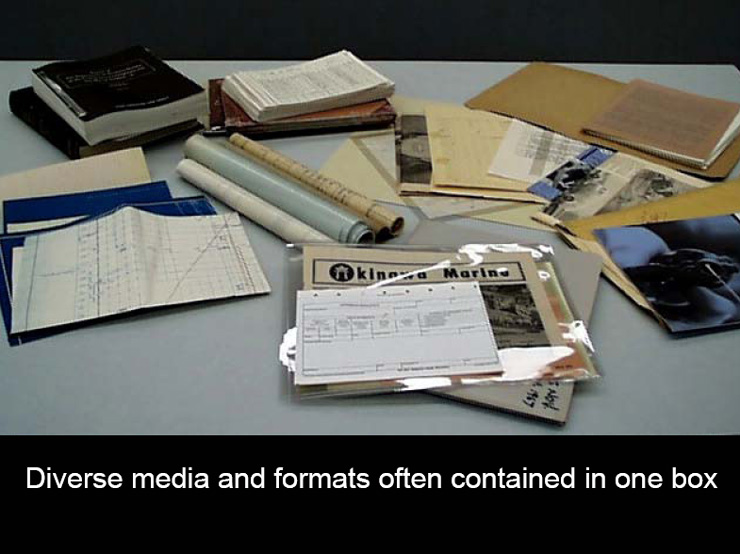
Comparison of Drying Methods
Most recovery guides recommend one drying method over another--based on material type and degree of wetness. Archives holdings represent a wide variety of formats and media, often contained in one box. If an emergency affects a moderate to large quantity of holdings, sorting and culling disparate materials from wet records is not practical or even possible.
To better understand how different drying methods would affect a sampling of archives materials, the results of 4 drying approaches were compared on sets of similar items. These disposable paper-based records were diverse, though they did not represent the entire universe of media and supports found within ourArchives.
7 sets, made up of two boxes each were carefully packed with expendable materials. Each box measured roughly point zero 3 (.028) cubic meters or 1 cubic foot, the common measurement for records storage boxes in the United States. Special care was taken to place all items in the same order within the boxes. 6 sets were wetted and dried; the 7th set remained un-wetted as a control.

